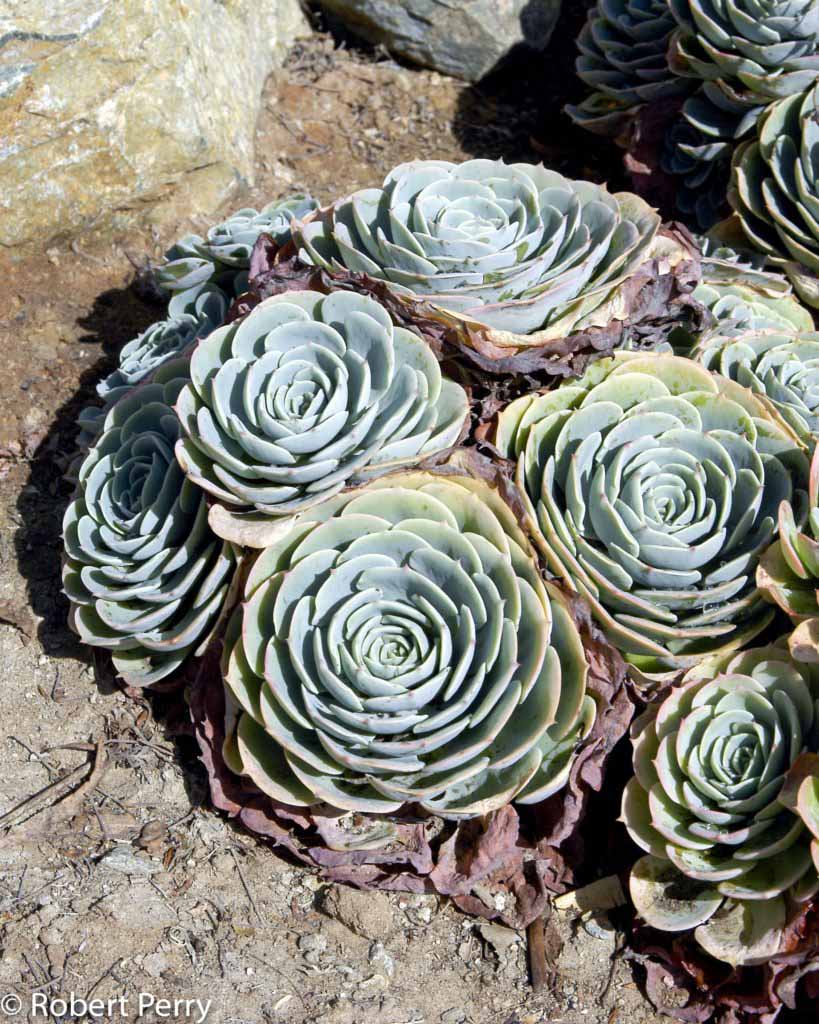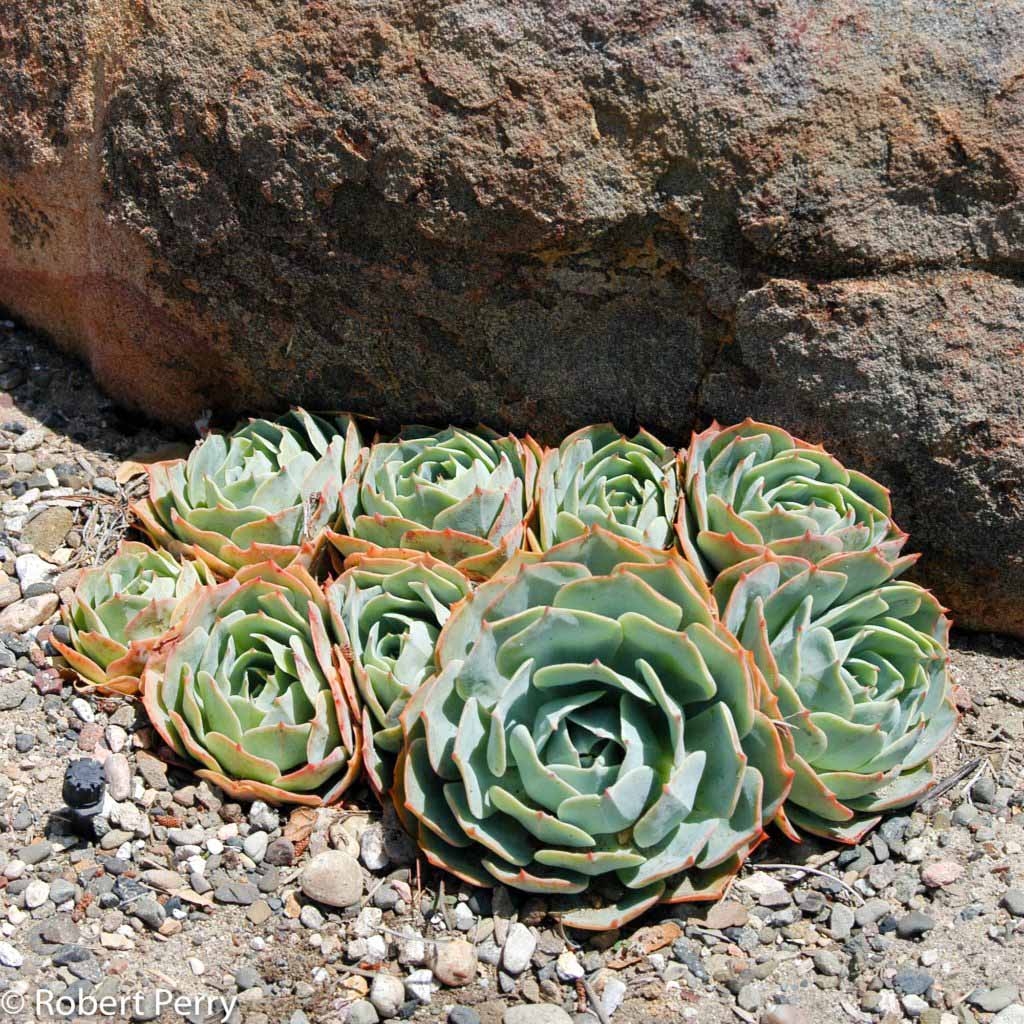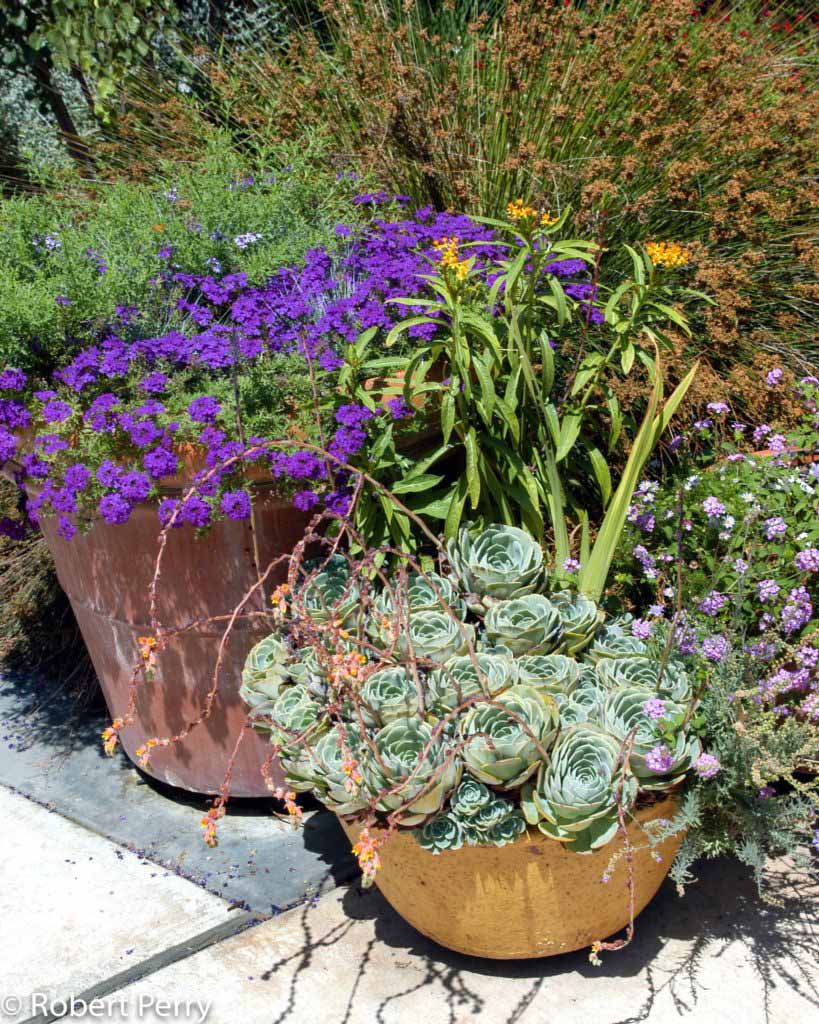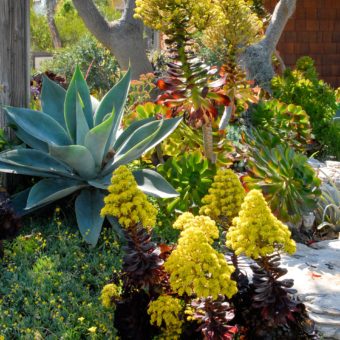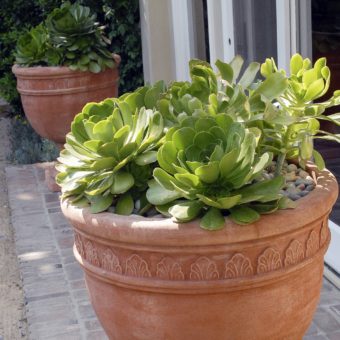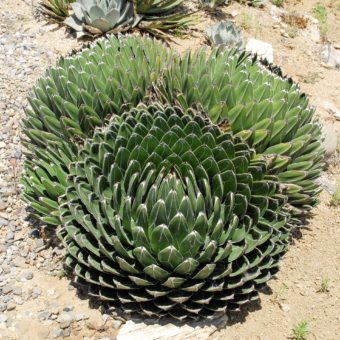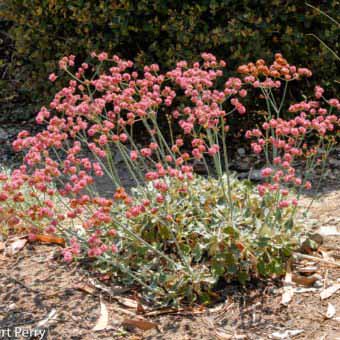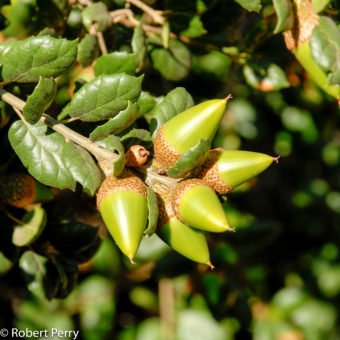Blue rose echeveria is densely clumping species that forms large groupings comprised of many plants that can spread 2-4 ft. wide. Thin gray-green leaves are closely cupped together, have a pointed apex and orange tinged margins. Colorful orange-red and yellow flowers develop on lax stems in spring. This is one of the most popular and widely planted echeverias in pots and rock gardens.
Blue rose echeveria belongs to a diverse group of perennial succulent plants that typically develop thick fleshy leaves arranged in distinctive rosette patterns. Echeverias easily hybridize and many named and unnamed cultivars are now available from specialty growers. These interesting plants are widely grown in personal plant collections and in small garden settings in microclimate areas throughout California.
Blue rose echeveria does best in morning sun and away from hot afternoon exposures. It grows best in light well-drained soils with low moisture from late spring through summer. Over time it produces many offsets to form attractive groupings of plants in containers, raised planters and in succulent gardens.
